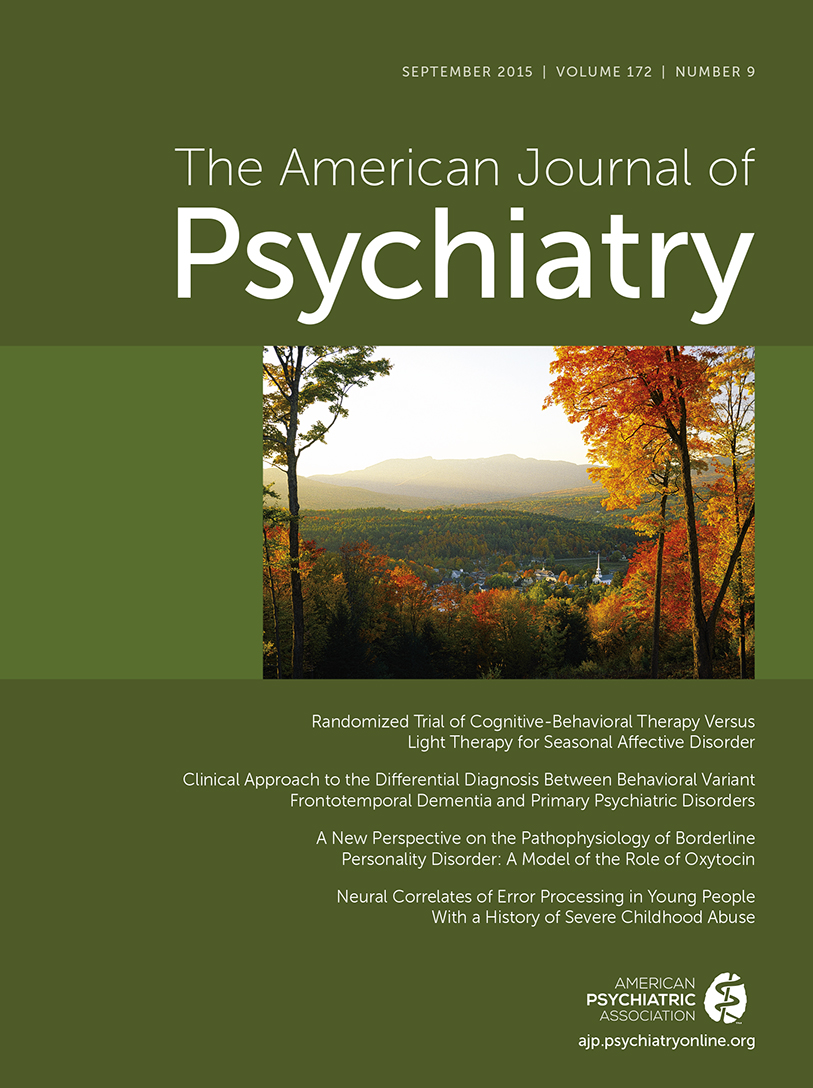T
o the E
ditor: The article by Axelson et al. (
1), published in the July 2015 issue of the
Journal, contained many new and startling findings. The authors did a great service for the field in identifying bipolar disorder not otherwise specified, depression, and disruptive behavioral disorders as predictors of later full syndromal bipolar disorder. They likewise concluded: “Clinicians should carefully assess for subthreshold manic or hypomanic episodes and differentiate them from symptoms of depression and other disorders in the offspring of parents with bipolar disorder, as they carry prognostic significance for the future development of full-threshold bipolar illness.” They also issued a plea for more treatment research of those with bipolar disorder not otherwise specified.
To these conclusions we would add that, with the exception of attention deficit hyperactivity disorder (ADHD), there is a paucity of treatment research in very young children with any of the disorders of which children of a bipolar parent are at high risk of developing. Axelson et al. found that, compared with community comparison children, such high-risk children have higher rates of anxiety disorder (39.9%), major depressive disorder (32.0%), oppositional disorder (25.3%), and bipolar spectrum disorder (19.2%). An astonishing 74.2% of the high-risk children had an axis I disorder, and even 48.4% of the children of community comparison parents from the United States also had an axis I diagnosis.
These data speak to the importance of vigilance and screening of high-risk children but also to the necessity of finding optimal treatments for the full range of these childhood disorders which remain highly prevalent in young children in the community. Relatively few studies are conducted in children younger than age 12, and there are no Food and Drug Administration–approved medications for children younger than age 8 with a mood or bipolar disorder; however, there are more than 20 approved preparations for ADHD.
To begin to address the dearth of studies of very young children with mood and behavioral disorders, we have initiated a Child Network where parents of children (ages 2 to 12) with these disorders or at risk for them can rate their child on severity of depression, anxiety, ADHD, oppositionality, and manic-like behavior on a weekly basis on a secure web site under protocol approved by a Johns Hopkins University institutional review board. This network should provide some of the first data about how very young children with mood and behavioral disorders in the United States are being treated and how well the treatment is working and tolerated. At the same time, the initiative allows parents to print out longitudinal weekly ratings so that they and their child’s clinician can better assess the course of symptoms and response to treatment, if any. These kinds of naturalistic data are being collected in studies of many other illnesses as a way of providing feedback to the scientific community about treatment trends outside of formal clinical treatment trials.
Acknowledgments
Dr. Post is the Director of the Bipolar Collaborative Network, which is currently enlisting parents to participate in the Child Network study, the goal of which is to compile and analyze the varied treatments for depressive, oppositional, bipolar, and anxiety disorders in very young children by documenting what is currently being done in the community. See
www.bipolarnews.org for more information on encouraging parents to join the Network.

